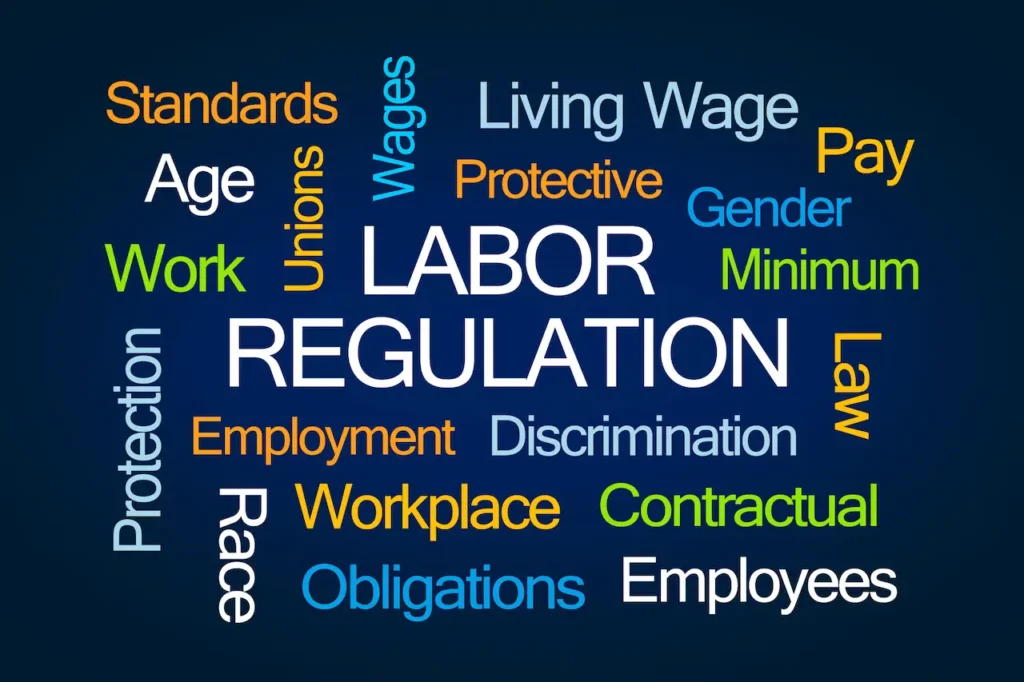Australia’s property market has long been a cornerstone of investment strategies, with many Australians relying on property to build wealth and secure their financial future. For years, negative gearing has been a key strategy for investors, allowing them to offset rental property losses against their taxable income. However, the political landscape surrounding negative gearing has shifted dramatically, particularly with the federal opposition’s proposal to reform the system. Labor’s proposed changes, if implemented, could have significant implications for property investors, particularly those heavily reliant on the benefits of negative gearing.
At RiskWise Property, we’ve been monitoring the potential ramifications of these proposed changes closely. Our team of property market analysts has been investigating the trends in the housing and investment markets and developing innovative tools, such as our Surplus/Shortfall Ratio (SSR), to predict future market trends. In this article, we explore how Labor’s planned reforms to negative gearing could impact Australian property investors, provide insights into how our SSR model is helping to forecast these market changes, and offer recommendations for investors seeking to adapt to an evolving market.

Understanding Labor’s Proposed Negative Gearing Changes
In 2016, the Australian Labor Party (ALP) announced a proposal to restrict negative gearing to newly constructed properties if they were to win the next federal election. The proposed policy seeks to limit the use of negative gearing as a tax deduction only to properties that are newly built, effectively preventing investors from using the strategy on existing properties. This proposal has caused significant debate, with proponents arguing it could help cool the housing market, particularly in cities like Sydney and Melbourne, while critics warn it could harm investor confidence and slow housing supply growth.
The policy aims to address two key issues. First, it seeks to reduce what some see as speculative investment in the property market, which has been driving up housing prices, particularly in inner-city areas. Second, by restricting negative gearing to new properties, Labor hopes to encourage investment in the construction of new housing stock, addressing the ongoing housing affordability crisis.
Alongside the proposed changes to negative gearing, Labor also announced plans to reduce the capital gains tax (CGT) discount for assets held longer than 12 months. The current CGT discount stands at 50%, but Labor’s proposal is to reduce it to 25% for new assets purchased after the implementation of the policy. This reduction in CGT benefits, combined with the changes to negative gearing, represents a substantial shift in the landscape for property investors.
Key Features of Labor’s Negative Gearing and CGT Proposal
- Negative Gearing: Labor proposes to limit the ability to claim tax deductions on rental property losses to newly constructed properties. Existing properties purchased before the policy’s implementation would remain “grandfathered,” meaning investors could continue to claim negative gearing benefits on these properties. However, properties purchased after the change would no longer be eligible for negative gearing if they were existing dwellings.
- Capital Gains Tax: Labor intends to halve the CGT discount on capital gains for assets acquired after the policy’s introduction. This change would reduce the CGT discount from the current 50% to 25%, further decreasing the tax benefits for property investors and other asset holders.
- Grandfathering Provisions: Importantly, existing investments would not be affected by the proposed changes. Investors who own properties before the policy’s implementation would still be able to claim negative gearing deductions and retain the current CGT discount on those properties.

The Potential Impact on the Property Market
While the full impact of these proposed changes remains uncertain, the industry is abuzz with speculation. Many experts predict that restricting negative gearing to newly constructed properties will have a profound effect on property prices, investor behavior, and the broader housing market. At RiskWise Property, we believe that the potential repercussions of these changes could be far-reaching and have lasting implications for both the property market and the investment strategies employed by Australians.
A Shift in Investor Activity
One of the key effects of restricting negative gearing to newly built properties is likely to be a reduction in investor activity in the market for existing properties. As noted earlier, negative gearing has been a powerful tool for property investors, allowing them to offset the costs associated with rental properties that are not immediately cash flow positive. This has made investing in existing properties particularly attractive, especially in high-growth areas.
Without the ability to claim negative gearing on existing properties, investors will likely reassess the attractiveness of these investments. In turn, this could lead to a decrease in demand for existing properties, particularly in cities where investors have historically been a key driver of price growth. As fewer investors enter the market, there may be a reduction in overall demand, potentially leading to price stagnation or even price declines in certain segments of the market.
On the other hand, demand for newly built properties could rise as a result of the policy. If investors can only claim negative gearing benefits on newly constructed properties, there may be a marked shift towards investing in off-the-plan developments and newly built homes. This could fuel demand for new housing stock, which may help stimulate the construction industry. However, there are also concerns that this could exacerbate the over-supply of apartments in some markets, particularly in the major capitals.
Price Pressure on Existing Dwellings
The reduction in investor demand for existing properties could create downward pressure on prices in certain markets. Areas with high levels of investor activity—such as parts of Sydney, Melbourne, and Brisbane—may experience more significant price declines as investors pull back from the market. This could be particularly noticeable in the more expensive inner-city areas, where negative gearing has been most widely used.
Moreover, the impact of reduced investor demand may be more pronounced in areas where the investor base is particularly sensitive to changes in tax policies. While owner-occupiers may not be directly affected by the removal of negative gearing, many markets rely on investor activity to drive price growth. If investors reduce their activity, it could slow price appreciation, or in some cases, lead to price corrections.
Impact on Housing Affordability
Labor’s proposed changes to negative gearing have been framed as a way to address housing affordability. However, the full effects on housing affordability remain uncertain. While reducing investor demand could slow price growth, particularly in the short term, it may not necessarily result in greater affordability for first-time homebuyers. In fact, the reduction in investor activity could increase competition among owner-occupiers, which may drive up prices for those seeking to purchase homes for personal use.
Furthermore, the reduction in investor participation in the market could limit the supply of rental properties, as fewer investors will be purchasing properties to rent out. This could put upward pressure on rental prices, further exacerbating affordability issues, particularly for renters in high-demand markets.
The Role of RiskWise Property Research in Predicting Market Trends
At RiskWise Property, we specialize in helping investors understand market dynamics through data-driven analysis. Our team uses advanced research tools and predictive models to assess market conditions, forecast investor behavior, and provide actionable insights for investors looking to navigate the ever-changing property market. One of the most powerful tools we use is the Surplus/Shortfall Ratio (SSR), a data-modelling tool that allows us to predict the level of investor activity in a given market based on key variables such as gross rental return, mortgage repayments, and prevailing interest rates.
The SSR works by calculating the ratio between an investor’s gross rental income and their mortgage repayments, factoring in the current cash rate and mortgage lending terms. By examining the SSR over time, we can gauge investor sentiment and predict how changes in market conditions—such as interest rate movements or changes to tax policy—may influence investor behavior.

Predicting the Impact of Negative Gearing Restrictions
The SSR has proven to be a highly effective tool for predicting investor activity. For instance, in 2017, our model predicted that the Sydney property market had reached its peak when the SSR was at a low point, indicating that investors were struggling to cover their expenses and that market activity was likely to slow. This prediction proved accurate as Sydney’s property market stalled in the years that followed.
According to RiskWise CEO Doron Peleg, as the surplus/shortfall ratio increases, so does investor activity. In other words, when the ratio improves (i.e., when rental returns become more favorable relative to mortgage repayments), investors are more likely to enter the market, which drives price growth. Conversely, when the SSR decreases (i.e., when it becomes harder for investors to cover the costs of their properties), investor activity drops, and market growth slows.
Removing or restricting negative gearing would reduce the surplus for many investors, as it would remove the tax deduction benefit on rental losses from existing properties. This would increase the shortfall for investors, making it harder for them to make investments in existing properties. Based on past trends, we predict this would reduce investor activity, leading to lower demand and potentially causing downward pressure on housing prices.
Long-Term Market Forecasts
While the immediate effects of Labor’s negative gearing changes are relatively clear, the long-term effects remain uncertain. Our team at RiskWise Property is continually monitoring market conditions and updating our models to provide more accurate forecasts. The eventual impact on property values will depend on a variety of factors, including the broader economic environment, interest rates, and government policies.
If negative gearing is restricted and investor activity declines, it’s likely that the market will experience some level of price correction, particularly in areas where investors play a significant role. However, the degree of this impact will vary by region, property type, and the extent of investor involvement in the market.
Conclusion: Navigating the Future of Property Investment
The proposed changes to negative gearing represent a significant shift in Australian property policy, with the potential to reshape the property investment landscape for years to come. While some investors may see opportunities in the shift toward new properties, others may find their investment strategies no longer viable under the new regime. At RiskWise Property, our team is committed to providing investors with the data, insights, and tools they need to make informed decisions in an uncertain market.
Our Surplus/Shortfall Ratio model is just one example of how we are leveraging data and research to help investors understand market trends and predict future outcomes. We recognize that the property market is highly dynamic and that changes in government policy, interest rates, and investor behavior can have profound effects on market performance.
As the debate around negative gearing continues, property investors must stay informed and be prepared to adjust their strategies. By using reliable data and predictive models like the SSR, investors can make more informed decisions and position themselves for success in a changing property market.